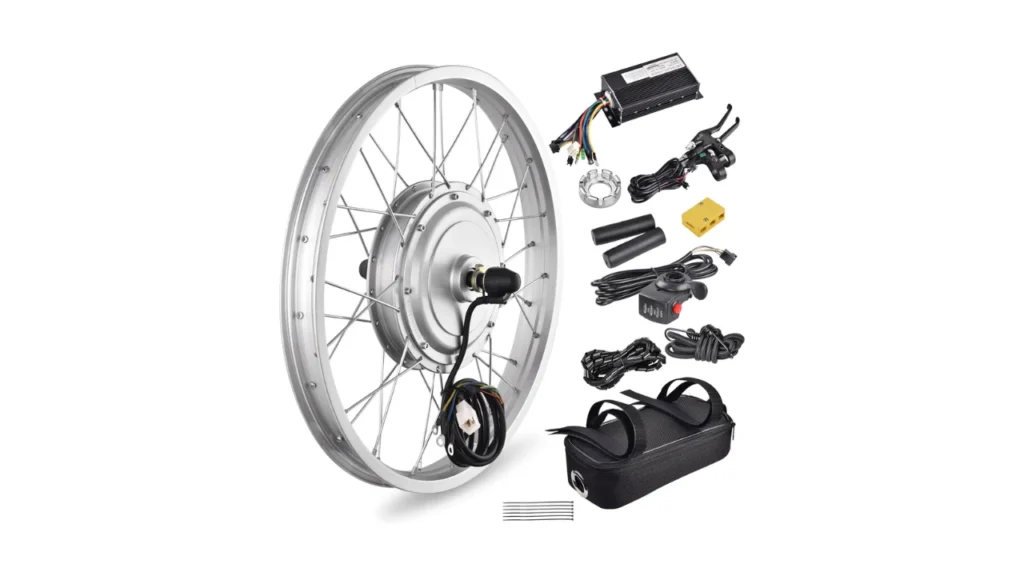Did you know the electric bike kit market is anticipated to grow to $2902.4 million by 2023, at a 10.5% CAGR? The global Electric Bike Kit Market was valued at $1,095.3 million in 2022 and is projected to reach $2,902.4 million by 2032. It is growing at a compound annual growth rate (CAGR) of 10.5% from 2023 to 2032.

Electric bike kits provide an affordable and eco-friendly solution for converting standard bicycles into electric vehicles. This allows riders to enjoy the benefits of assisted cycling—such as extended range, reduced effort, and increased speed—without the need to invest in a new e-bike.
The growth of this market is driven by increasing awareness of environmental sustainability, urbanization, and traffic congestion, along with government incentives promoting electric vehicle adoption. However, challenges such as technical complexity and installation difficulties may hinder market expansion.
On the upside, advancements in battery technology and a rising demand for electric mobility solutions present lucrative opportunities for future growth in the electric bike kit sector.
Electric bikes and conversion kits are becoming increasingly popular as more people focus on sustainable transportation amid growing concerns about climate change and environmental impact. For many, especially those in areas where electric bikes are scarce or expensive, conversion kits offer a practical and cost-effective alternative to purchasing a new e-bike.
Additionally, there is a rising demand for these kits among cyclists who want to transform their existing bikes into electric ones without sacrificing their favorite ride. This trend aligns with the global push to reduce carbon emissions and promote eco-friendly transportation options.
As more individuals seek ways to minimize their environmental footprint, conversion kits provide an appealing solution that combines convenience with sustainability.
In 2022, the lithium-ion battery segment dominated the market and is expected to maintain its leading position, with a projected compound annual growth rate (CAGR) of 11.1% from 2023 to 2032. This growth can be attributed to the increasing popularity of lithium-ion batteries, which are lightweight, high-capacity, and have seen significant price reductions in recent years.
Lithium-ion batteries come in various configurations, combining different amounts of materials such as phosphate, manganese, nickel, iron, and cobalt with lithium. Additionally, these batteries require minimal maintenance and do not need scheduled cycling to preserve their lifespan. This makes them an attractive choice for consumers looking for reliable and efficient power sources.
Recent advancements in charging infrastructure and the expanding vehicle industry offer exciting growth opportunities for consumers. Sales of e-bike kits have surged, with these products becoming more widely available both online and in retail stores across the country.
Additionally, gig economy organizations operating in India are making significant investments in research and development to enhance product quality. These efforts focus on improving battery technology, utilizing lightweight materials, and implementing innovative marketing strategies to boost overall revenue.
As a result of these initiatives, we can expect the market size to grow, potentially leading to increased sales of electric bicycles in India over the next few years.
The electric bike kit market is categorized based on several factors, including usage, battery type, speed, and region. In terms of usage, the market is divided into segments such as mountain bikes, road bikes, cargo bikes, and others. When looking at battery types, the main categories include lithium-ion, lead acid, and other options.
Speed-wise, the market is segmented into three groups: bikes that reach speeds of up to 25 km/h, those that go between 25-45 km/h, and those exceeding 45 km/h. Regionally, the market analysis covers North America, Europe, Asia-Pacific, and LAMEA (Latin America, the Middle East, and Africa). This comprehensive segmentation helps to better understand the diverse landscape of the electric bike kit market.
Between January 2021 and August 2022, fuel prices in India surged nearly five times faster than general consumer prices, rising by 57%. This dramatic increase has driven up demand for electric bike kits as consumers seek more cost-effective transportation options. The rising cost of crude oil, largely controlled by OPEC countries, is a key factor behind this fuel price hike.
In response to these challenges, governments worldwide are actively developing charging infrastructure to support the adoption of electric bikes. Incentives, programs, and subsidies are being implemented to maximize benefits while minimizing costs for consumers.
As electric bikes are both eco-friendly and user-friendly, they present an attractive alternative to traditional gasoline-powered vehicles. Consequently, we can expect a significant increase in the number of people opting for electric bikes over gasoline options, which will greatly contribute to the growth of the electric bike kit industry.
In 2022, the segment for speeds up to 25 km/h held the largest market share and is expected to maintain its leading position throughout the forecast period. This popularity can be attributed to the advantages of electric assistance, which offer reduced physical effort and increased speed without requiring consumers to invest in a dedicated electric bicycle.
On the other hand, the segment for speeds above 45 km/h is anticipated to experience the highest compound annual growth rate (CAGR) of 11.3% from 2023 to 2032. This growth is driven by advancements in lightweight, high-capacity batteries that enhance range and performance. It effectively addresses one of the primary concerns for consumers interested in high-speed electric bicycles.
In 2022, the Asia-Pacific region captured the largest market share in revenue and is projected to maintain its leading position throughout the forecast period. This growth is largely driven by rapid urbanization and high population density in many cities across the region. As urban areas expand and traffic congestion becomes more severe, the compact and agile design of electric bikes increasingly appeals to commuters.
Meanwhile, North America is expected to experience the fastest compound annual growth rate (CAGR) of 11.7% from 2023 to 2032. This surge in growth can be attributed to the rising adoption of electric mobility across various countries in the region. Additionally, government initiatives are playing a crucial role in fostering the development of the electric bike kit market, further supporting this upward trend.